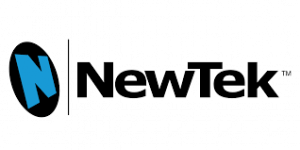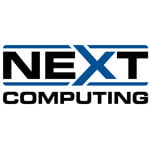 Line 6, the California-based manufacturer of popular musical instrument and audio production gear, made an official statement last week about a problem that users have been reporting for awhile. Spend even a short amount of time on any public forum dedicated to Line 6 gear and you’ll see multiple posts complaining about issues using Line 6 products with the latest build of Apple’s Macintosh operating system, OS 10.11 (“El Capitan”).
Line 6, the California-based manufacturer of popular musical instrument and audio production gear, made an official statement last week about a problem that users have been reporting for awhile. Spend even a short amount of time on any public forum dedicated to Line 6 gear and you’ll see multiple posts complaining about issues using Line 6 products with the latest build of Apple’s Macintosh operating system, OS 10.11 (“El Capitan”).
Line 6 sent an e-mail to registered users late last week acknowledging the issue. It’s the first time any official word has come from the company regarding the problem:
We have discovered an incompatibility of the Line 6 USB audio driver version 7.3.8 and Mac OS 10.11 El Capitan. After updating to Mac OS 10.11 the Line 6 USB audio driver will no longer connect to hardware devices. Line 6 applications that rely on this driver, for example Line 6 Monkey, will therefore not process audio or allow hardware configuration changes.
We apologize for the inconvenience and we will publish an updated driver soon.
The e-mail also provided a list of the affected Line 6 products. The list is rather long and contains most of the company’s popular products, including its PodHD line of effects processors and the M20d digital mixer. The only advice Line 6 is providing on the matter is to hold off on upgrading to El Capitan:
We highly recommend you do not update to Mac OS 10.11 El Capitan in order to maintain correct Line 6 USB audio driver functionality.
It’s not much of a solution, especially for those who’ve already upgraded their machines. Overall, it’s unfortunate that Line 6 customers have had to face this inconvenience. But it also shows why it’s a good idea to exercise patience in the face of these kinds of upgrades, especially for mission-critical gear.

 Electronic media gathering in remote locations has become increasingly easier in recent years, mainly due to the versatility of mobile smart devices. Unlike a simple camera or digital audio recorder, a smart device can run apps that allow it to become a fully functional production studio. But most of these devices aren’t equipped with professional-level microphones. Equipment manufacturers have stepped in to bridge that gap. The latest to do so is Rode with the announcement of its
Electronic media gathering in remote locations has become increasingly easier in recent years, mainly due to the versatility of mobile smart devices. Unlike a simple camera or digital audio recorder, a smart device can run apps that allow it to become a fully functional production studio. But most of these devices aren’t equipped with professional-level microphones. Equipment manufacturers have stepped in to bridge that gap. The latest to do so is Rode with the announcement of its  The market for all-in-one live video streaming devices has really taken off over the last year. It’s definitely easier than ever to create, capture, encode, and stream live video. The latest device in this ever-expanding vertical was just Announced by Cerevo. It’s named
The market for all-in-one live video streaming devices has really taken off over the last year. It’s definitely easier than ever to create, capture, encode, and stream live video. The latest device in this ever-expanding vertical was just Announced by Cerevo. It’s named 

 Zylight has been providing industry-leading lighting products for television, film, and theatrical production since 2003. And the company is still going strong, arriving at this year’s NAB with some cool new lighting solutions in tow.
Zylight has been providing industry-leading lighting products for television, film, and theatrical production since 2003. And the company is still going strong, arriving at this year’s NAB with some cool new lighting solutions in tow. If you face any kind of challenge in terms of your video production rig/workflow, Teradek probably has a product or two that’ll help you out.
If you face any kind of challenge in terms of your video production rig/workflow, Teradek probably has a product or two that’ll help you out. It might seem like live video streaming is truly ubiquitous in 2015. But there are still many hurdles to overcome for video producers. Fortunately, companies like PESA are out there designing new products and services to help bridge the gap.
It might seem like live video streaming is truly ubiquitous in 2015. But there are still many hurdles to overcome for video producers. Fortunately, companies like PESA are out there designing new products and services to help bridge the gap. There are a lot of options out there for producers when it comes to gear. That includes the computers they use. Sometimes, buying off-the-shelf machines does the job. But many times, it doesn’t. That’s where Next Computing comes in.
There are a lot of options out there for producers when it comes to gear. That includes the computers they use. Sometimes, buying off-the-shelf machines does the job. But many times, it doesn’t. That’s where Next Computing comes in.